What we wish we’d known before building our energy-efficient house
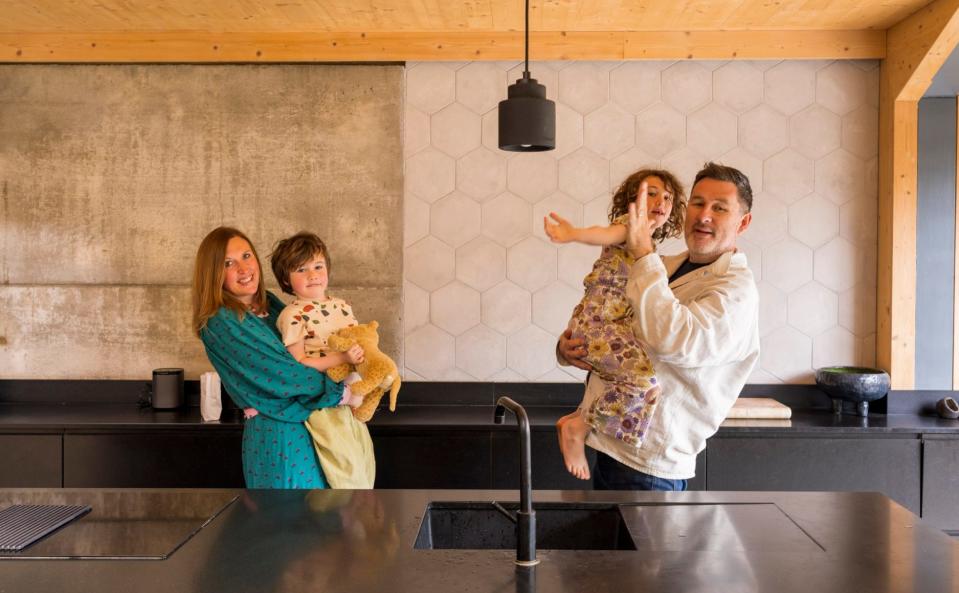
Imagine, amid an energy crisis, a home that costs a pittance to keep luxuriously warm. Then expand that fantasy even further and picture the families who notch up escalating wads of credit with their energy supplier ... it may sound improbable, but this does happen.
It’s not just spanking new-builds with their whip-smart technology and shiny interiors that are more resistant to rising energy costs; an increasing number of homeowners are deciding to retrofit their older properties, upgrading them to be extra efficient, economical and a pleasure to live in.
“I’ve had clients coming to see me to discuss a retrofit on their period house, and they say they are sick of having mould around their windows in a freezing bathroom,” says architect Robert Prewett. “Yes, we all want to be immune from rising energy costs, but a home should also be somewhere that feels comfortable. Especially as you get older, it’s all about good quality of life.”
Hanging thermal curtains or positioning a rug over leaky floorboards might be a positive intent, but these minor modifications will not manifest as significant home/life upgrades. To really make a difference to how you want your property to perform, and how well you want to live in it, you may need to commit to more substantial solutions.
Some of the options available today will save you a lot of money in the long term, while also enriching your everyday.
Make a ‘whole house’ plan
Any small constructive changes to your home will make a difference, but like most things, an accumulation of positives really can turn things around. You might not be able to start from scratch with a new-build or embark on a complete period property retrofit, but it’s practical to consider the bigger picture.
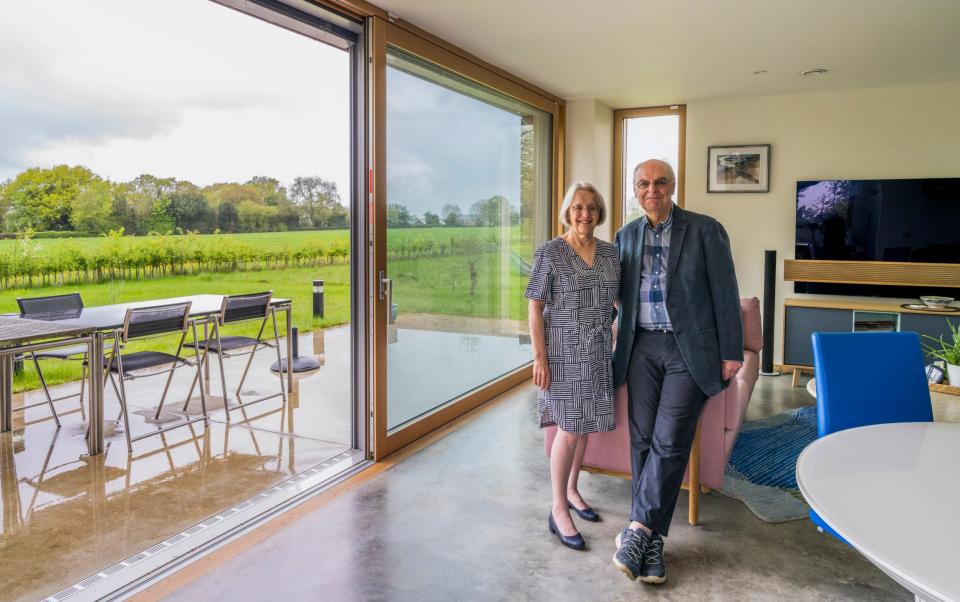
The Government is currently proposing that the 27 million residential properties across the UK will need to reduce their carbon emissions to net zero by 2050. It makes sense to have your own long-term plan – say, over 10 years. Start by dealing with any existing damp or defects, and consider better insulation in the loft, then work towards more committed changes, such as wall and floor insulation – especially as it seems mandatory home alterations will eventually be put in place. For around £200, you could even call on the services of an accredited domestic energy assessor (DEA), who will work out the energy efficiency of your home.
Insulation: dull but brings bang for your buck
There’s no way around it: without good insulation, you will be banging your head against a thin, draughty wall. Robert Prewett of Prewett Bizley Architects says it’s just like wrapping yourself in a thick woolly jumper – add layers to your home and they immediately affect its efficiency. “Especially in older homes, heat leaks out of the roof, windows, around the doors, through the floorboards, and via any gaps or cracks in walls and ceilings,” he says. “Plus, damp houses lose more heat than dry homes.
When I am dealing with a period property, I always consider the original building materials. Victorian homes were constructed with brick, lime, mortar and timber, which all manage moisture well, so any new materials have to be breathable and sympathetic to that. For example, using something like wood fibre for insulation will improve the efficiency of the home without trapping moisture; it has a similar tolerance and won’t cause damp. It’s also important to ensure adequate ventilation as we make the home more draught-free. As for outlay, wall and suspended floor insulation is around £200 per square metre – for lofts it’s usually less.”
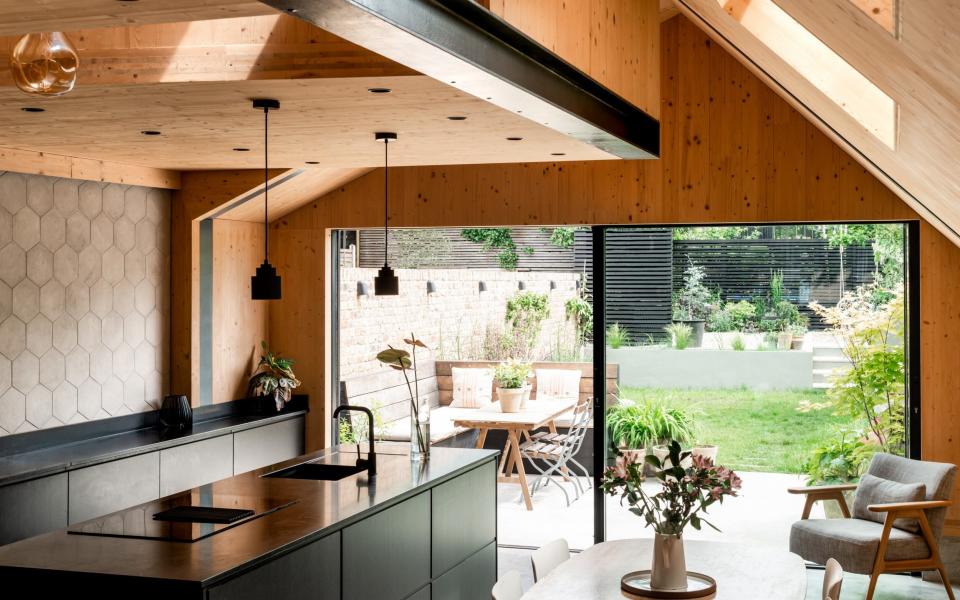
Adding even modest amounts of wall insulation, such as thin wood fibre board or insulating plaster, to solid interior walls can improve their performance by up to four times. Another option is rendered insulation to the exterior walls of your home. While this may not be as appealing on properties with ornate period features, you can always choose to render the rear of the house, which tends to be less ornamental.
A new buzzword: airtightness
Insulation and airtight windows go hand in hand. When a home is insulated and draught-free, it becomes more energy efficient. The Passive House standard, set by Germany’s Passivhaus Institute in the early 1990s, works on the principle that heat is kept inside in winter and outside in summer; with ample fresh air supplied by heat recovery ventilation, which saves 90 per cent of your winter heat with only 30 watts of power (this doesn’t mean you can’t open the windows, you just might not need to). Architect Justin Bere of Bere Architects, who specialises in Passive House design, is passionate about this approach. “People think it can only be applied to new-builds, but I also retrofit period properties regularly to the Passivhaus level. In fact, I currently have a long waiting list of clients who want to radically improve their homes.”
Badly designed windows are often the main culprit when it comes to bone-cracking draughts blasting through your living room. Triple-glazing is the norm in Passive House new-builds and retrofits, and will set you back around £700 per square metre, while sash windows can be renovated and installed with vacuum glazing, which has two panes of glass separated by a vacuum of air, thus enhancing thermal performance. High quality sashes cost about £1,000 per square metre.
Air-source heat pumps can work in period homes
Justin Bere believes renewable heat technology, for example air-source heat pumps, can function well in period properties, but you need to get – guess what – your insulation and airtightness right first. An air-source heat pump functions by absorbing heat (even on a typically cold winter day) from the air outside and transferring it into your rooms via radiators or underfloor heating.
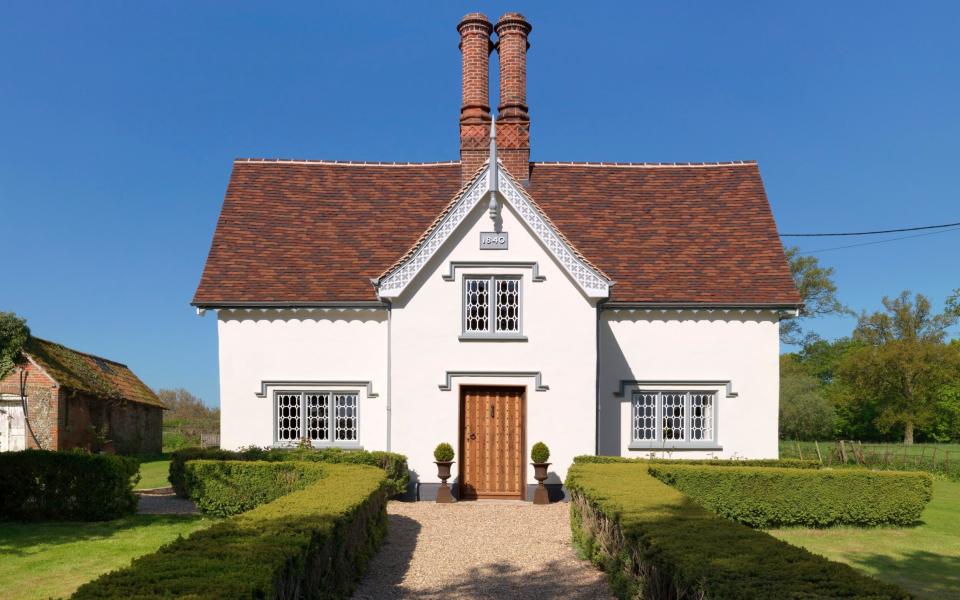
They are an appealing addition because they use three to four times less energy than gas boilers, and can run on cleaner electric energy (wind farms) rather than fossil fuel. The cost for an air-source heat pump and tank is about £10,000-12,000. The government wants to see 600,000 installed every year by 2028, and it’s crucial to get someone who understands installation well – look for companies on the Microgeneration Certification Scheme (MCS) register. One thing to remember: they are most efficient when running at lower temperatures, so in old houses that have not been insulated, they may struggle to keep you warm during a harsh winter.
Save money, boost your health
A mechanical ventilation and heat recovery system (MVHR) is a gizmo that helps keep your bills at bay, while also filtering your air of contaminants. For a standard UK home, the kit costs around £5,000, plus installation. It regulates the temperature and air quality by extracting warm moist air (from kitchens, bathrooms, utility rooms) and replacing it with fresh filtered air. Robert Prewett says that running his MVHR in his average-sized home costs about 20p a day and saves him £300 a year in gas use, as well as providing high indoor air quality.
Solar panels: worth the outlay
“The initial investment can be substantial for photovoltaic (solar) panels,” agrees Prewett. “You can expect to pay several hundred pounds per panel, plus ancillary equipment and installation costs, so it can run into the mid-thousands, but in an energy-efficient house, they will contribute significantly to the overall energy use – and their payback time is increasingly attractive.”
He continues, “You might want to consider investing in a battery (from around the £8,000 mark). These store excess generated energy, so you often have enough of your own electricity to keep you supplied after the sun goes down, or to help if the next day is overcast. With higher prices, greater utilisation of PV-generated energy makes more sense. Battery storage can also help protect against power outages, which may become more commonplace in the future.”
Use the Solar Energy Calculator on the Energy Saving Trust website to discover how much you could save on your bills.
‘Our energy bill is in credit by £300 a year’
David and Linda Shall, both 69, are retired company directors. They live in Brambles, a three-bedroom, certified Passivhaus Plus home in Hertfordshire.
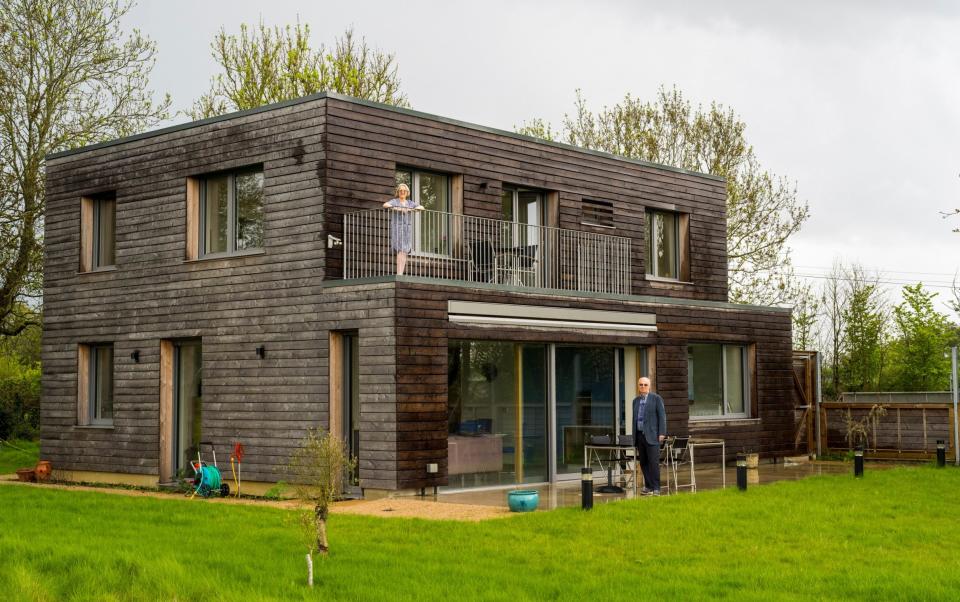
It was a fortunate mistake that landed David and Linda Shall in their current situation. A few years ago, while looking for their forever home, David misplaced the “potential properties” list that Linda had compiled for viewing. Thinking he could recall the address of one possible option, David stumbled upon an outdated 1960s bungalow that was not on the list and assumed Linda would dismiss it immediately – all it looked good for was knocking down.
And that’s just what they did. Because while Linda had been waiting for her husband to retire, she had completed a degree in environmental science, with a particular interest in Passive House design – and here was the perfect opportunity to build a home that fell in line with the couple’s sustainability values while offering them a cost-effective way of living into their older age.
“We wanted an architect who fully understood the Passive House standard, and who could help us to realise our goal,” says David. “Justin Bere collaborated with us on every aspect and we completely trusted his decision-making.”
And so the couple made the leap. They paid £800,000 to purchase the old bungalow, and then spent around £500,000 on the build, which took about nine months to complete. They now say it has surpassed their every expectation.
The home is an impressive all-electric design running on 100 per cent renewable energy. It does all the right things: it is heavily insulated with internal cellulose (recycled paper) and exterior wooden cladding, and there’s also an air-source heat pump, a mechanical ventilation and heat recovery system (MVHR) to provide warm filtered air, triple-glazed windows and solar panels – which create more energy over a year than the couple use.
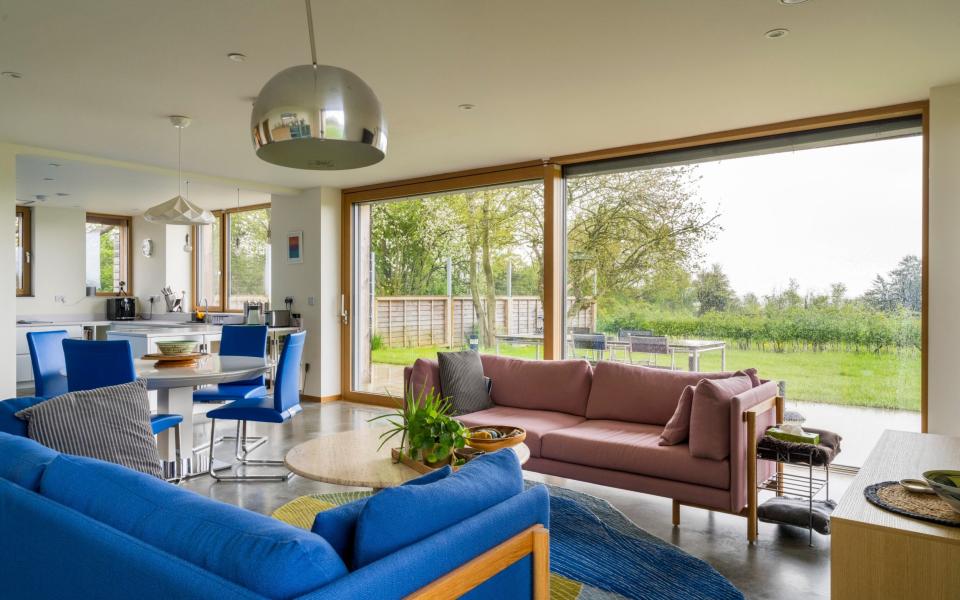
“We monitored the building for two years, recording its energy usage at five-minute intervals,” says Bere. “We found that, over 12 months, it generates three times more energy than it imports from the grid.
He continues, “Recently the couple bought an electric car, which is running about 150 miles a week. Previously, their energy bill was in credit by about £600 a year, but now the car has reduced that to £300 in credit, including all their costs to heat and power the house and run the car. So it’s still a win-win.”
Who wouldn’t find those stats appealing? “We’d lived in a new-build for 18 years before this one,” reveals David, “but the building standards back then were not so rigorous. The only thing between Linda and the winds from Siberia was a thin brick wall that leaked heat, and we were forever cranking up the boiler. In this house, there are no chilly spots at all. At 6am on a snowy winter morning, the heat pump might need to push some extra warmth into the rooms, but since we’ve lived here, we’ve never felt cold.”
The couple say they are delighted with their home, and with Bere’s promise that “the house will last several times longer than a power station”, it is a fine legacy for their children.
“Not only does our amazing energy efficiency mean there are times when we can sell back to the grid, but the low running costs mean our quality of life has improved,” says David. “To be honest, when other people talk about their extortionate bills, we have to look the other way.”
‘The architect suggested we demolish’
Mark Dolan, 54, is a documentary producer and wife Jane, 46, is a PR consultant and lecturer. They live with their children Amelie, seven, and Sonny, five, in a three-bedroom Victorian house in London.
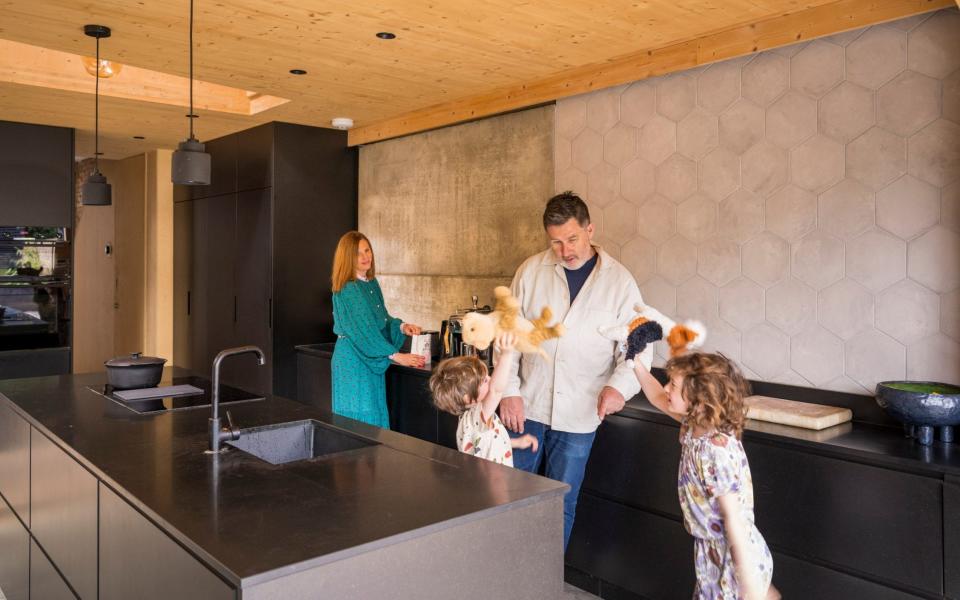
“When we first bought the house, it was dated and in very poor condition,” says Mark Dolan. “We were open to trying new ideas, so when our architect, Tom Gresford, suggested we demolish the whole rear section and build again from scratch, we decided to go for it.”
The three-storey extension, which reaches up to the roof, was constructed with a timber cross-laminated frame and clad in black charred larch on the exterior. “Timber doesn’t transmit the cold like brick or concrete, so its thermal performance is much better,” says Gresford, founder of the practice Gresford Architects. “Fundamentally, with wood you are adding warm layers. Then because we built a new roof for the entire house, we could include the all-important insulation.”
The house sits in two halves: the Victorian front section, which has been through a retrofit, and the modern rear design with its underfloor heating, triple-glazed windows and soaring double-height spaces, which flood the area with light.
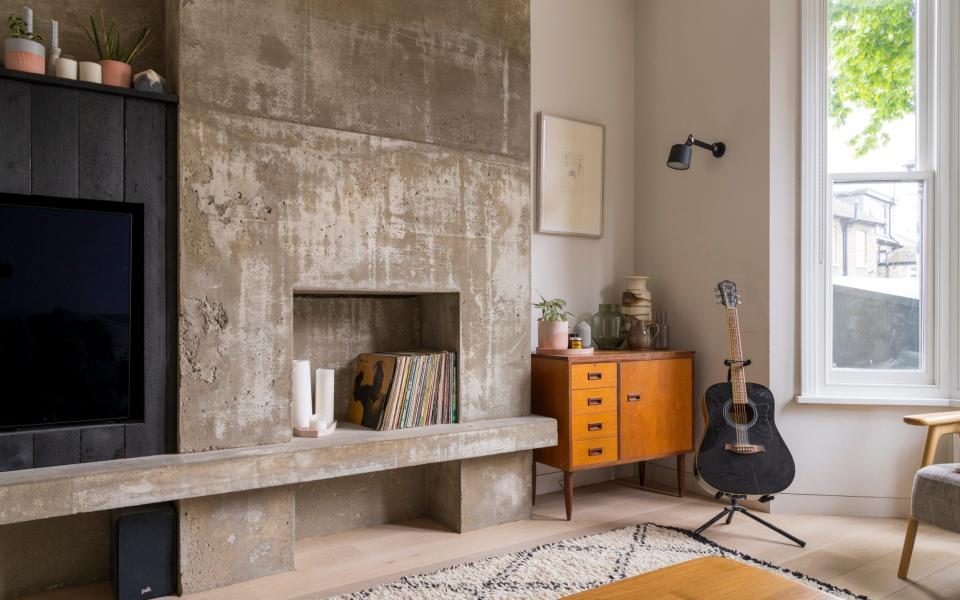
“It was a significant commitment,” admits Mark, “and probably cost us around £450,000. But we plan to be here for some time, and the pleasure it gives us is priceless. We did get into the classic Grand Designs drama, though – we moved out for a year and then our son was born during that time. Never a dull moment … But I love that we don’t have a cookie-cutter-type home; it’s so distinctive. And I estimate that our heating bills are a third lower than if we’d used traditional construction methods.”
In Tom’s practice, he is noticing an increasing number of clients wanting a better performance from their properties. And, personally, he is currently working towards his own EnerPHit (the Passivhaus certificate for retrofits) on his 1990s bungalow in Oxfordshire. “It’s the ultimate goal: energy efficiency, sustainability and comfort.”
‘It was damp, dark and impractical’
Peter Kilner, 69, a retired GP, and his wife Julie, 64, a retired community nurse, recently restored the 19th-century Little Horsecroft Cottage in Suffolk.
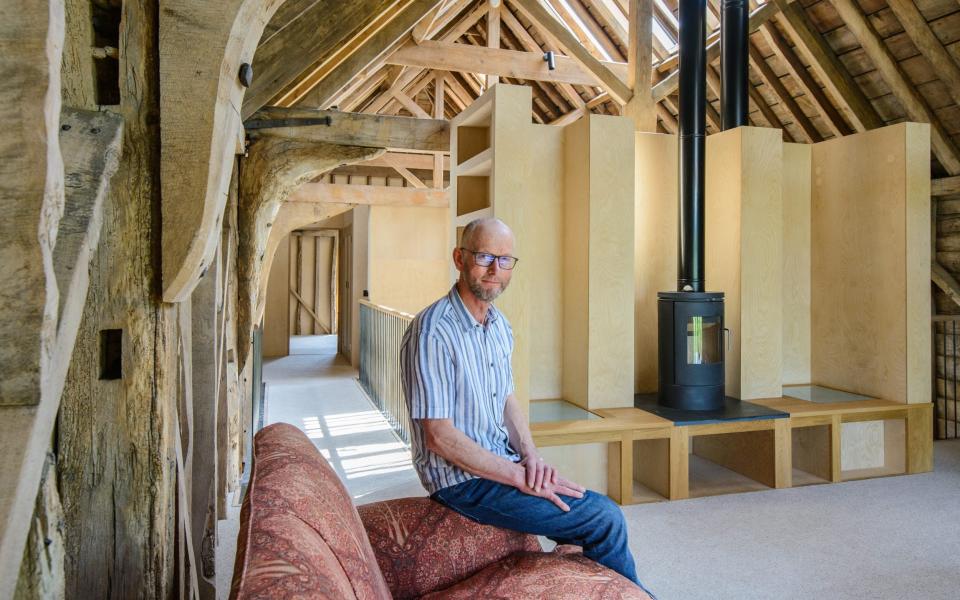
This project has its foundations firmly embedded in family heritage. The cottage sits on the Horsecroft estate – a large area of parkland around a Regency house in which owner Peter Kilner’s paternal grandmother was born. The estate passed to Peter’s great-uncle and his direct descendants, then after their deaths, was left to various charities in 2015. Peter and Julie applied to buy a small corner of the estate that contained a grade II-listed barn, where they now live, and this cottage, which is used for guests and family when they come to stay.
While energy efficiency was at the top of this couple’s list of priorities, it was also important to them to keep Horsecroft’s traditional design in mind. “It had to be future-proofed for modern living but we were keen to preserve the bones of the building; some of it dates back to the 17th century,” says Peter.
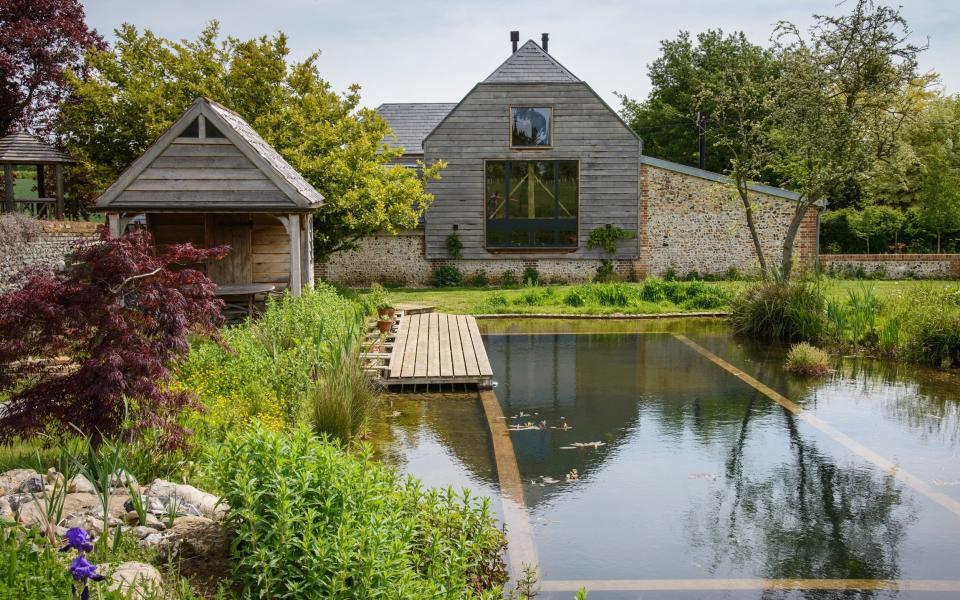
With the support of their skilled architect, Al Scott from If Do Architects, the couple have cleverly retained the chocolate-box appeal of the cottage. “Proficiency and functionality have been priorities,” says Scott. “Much of the interior has utilised the historic brick and timber frame of the building, together with lime-rendered walls, so there will be little need for redecoration in the future. Modern levels of insulation were achieved with recycled foam glass thermal insulation beneath the floor and sheep’s wool to the walls. A ground-source heat pump and large glazed windows in the rear extension make the cottage highly energy-efficient and eco-friendly.”
Peter comments, “Now we want to sit back and enjoy being here. We are genuinely delighted with our architect’s input into the design and delivery – the conversion of the cottage from a damp, dark, impractical building into a light and cosy home is wonderful. It’s economical to run and easy to maintain, so our time can be spent more leisurely and we can relish being with our four grown-up children and grandchildren.”
‘Storm Arwen wiped out our rental’s power’
Sarah Henbrey, 60, is an executive coach and Alan Ellison, 63, is a retired maths teacher. They live in a four-bedroom new build in the Scottish Highlands.
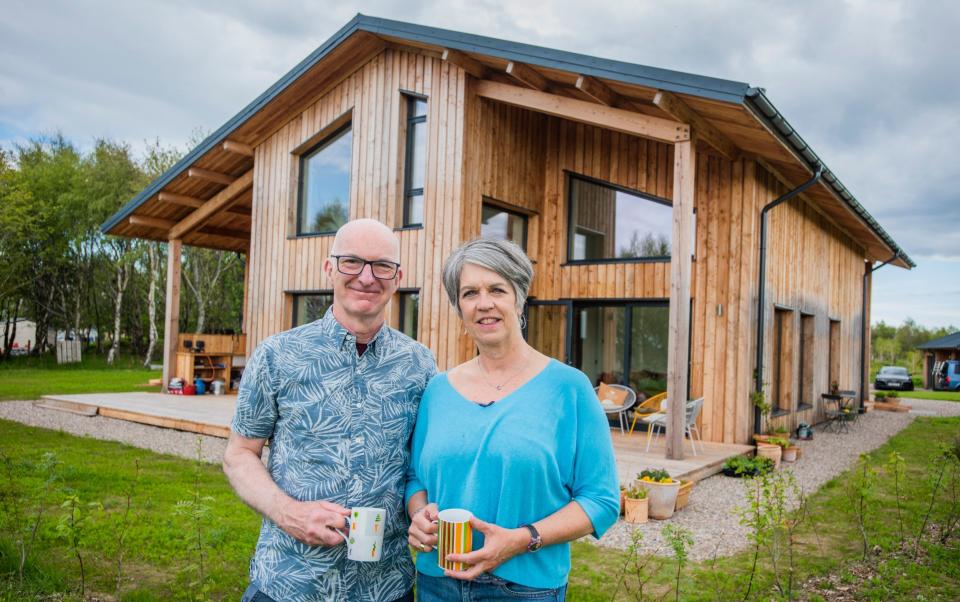
As Alan has Scottish roots, he and Sarah had often talked about moving away from Hampshire and back to Scotland once they retired. In November 2020, after selling their house in Fleet, they headed north.
“Friends had introduced us to an area around the Moray Firth where building plots were being sold off from an old golf course,” says Sarah. “The opportunity to have a modern, bespoke and sustainable home swayed us. Although it felt exciting, it was also daunting. We’d only ever built a small kitchen extension before.”
Detailed conversations with a local architect from a company specialising in sustainable builds kickstarted their adventure. Then, after they found a rental near to the site, the blueprint for an open-plan home began to take shape.
“The foundations were dug in February 2021 and we finally moved in at the beginning of December 2022. It was a slow process,” admits Sarah. “The pandemic played a role, because some materials were harder to source and there were issues with our builder’s project management.”
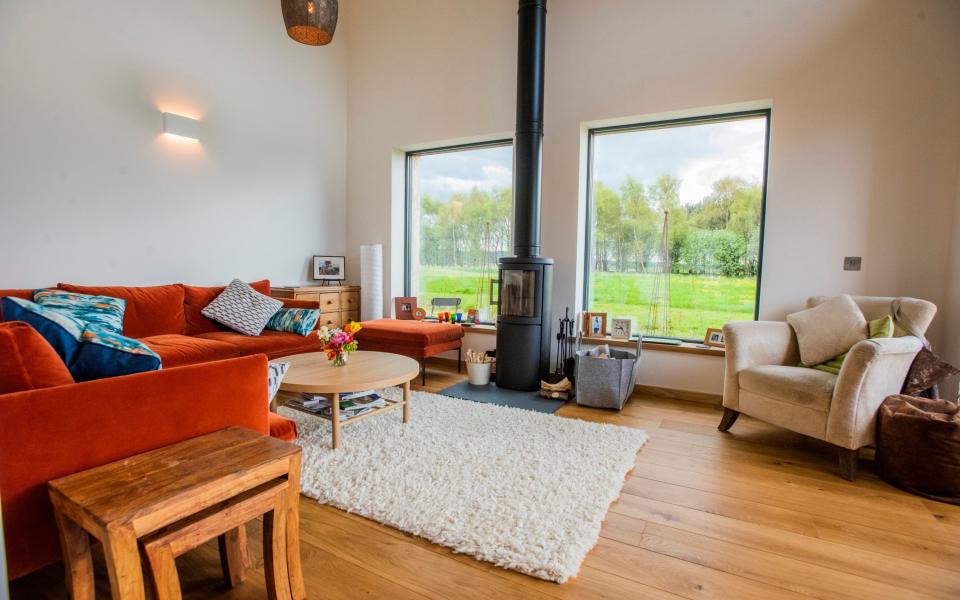
This being Scotland, where the weather can switch in a heartbeat, energy efficiency was essential. There was a tick-box of important credentials: triple-glazed windows, air-source heat pump, MVHR, underfloor heating, insulation at every opportunity and 12 solar panels on the roof.
Sarah comments: “We hadn’t previously thought about getting a battery to store the solar, and at £8,000 it’s a big investment. But then Storm Arwen struck in November 2021 and we had a three-day power cut in our rental. It was freezing. We soon realised the importance of energy security. A reserve in a battery will store any excess for those times when you need it, and during the spring and summer months in Scotland, with such long days, we can utilise solar power until 10pm.”
Sarah says their home is consistently warm in the winter and cool in the summer. Yet their energy bills are ridiculously low. Last week, Sarah’s energy supplier app told her she’d notched up a scant £11.76, despite a lot of washing of sports clothes. “It’s a such a comfortable way to live, too,” adds Sarah. “I can sit by one of our huge windows, looking out at the northern lights, and not feel cold. One of the best things about this home is the total lack of draughts. It might sound silly but it makes a big difference to our comfort and feeling of wellbeing.”

 Yahoo Sports
Yahoo Sports 